A 10-step plan for Australia to beat England and win the Cricket World Cup
Trust in the David Warner-Aaron Finch axis, get more out of Steve Smith at No. 3, follow the skipper’s plans to the letter, promote Alex Carey ... oh, and winning the toss would be useful.
- Big Show cancelled? Maxi facing the axe
- India-New Zealand goes to a second day
- Root refuses to play Lyon’s mind games
- Why Wade has to play against England
Australia have nothing to fear from England in their World Cup semi-final — especially if they adhere to the following 10 point plan to ultimate glory.*
LIVE BLOG: Follow all the Australia v England action from the World Cup semi-final.
WIN THE TOSS AND BAT
When even England — who came in to this tournament convinced they could chase anything down and so were minded to put the opposition in every time — have conducted a mid-tournament about face and gone the other way, you get an understanding of how important the toss has become at this World Cup.
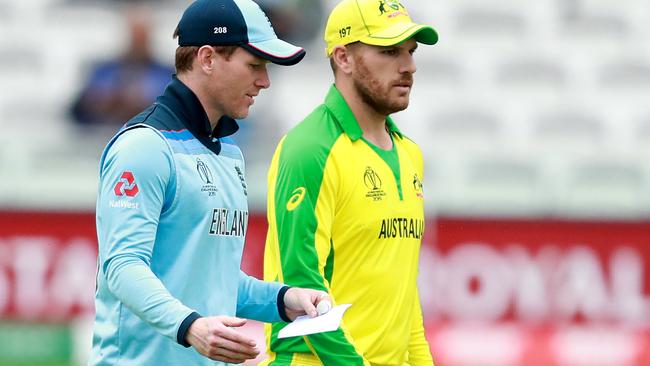
The team batting first have won 26 of the 39 completed matches; and 15 of the last 18. Wearing, slowing pitches and the sheer weight of pressure chasing at the back end of a World Cup has presented the team bowling second with a clear advantage.
ULTIMATE GUIDE: Why semi-final will be decided by Warner and Bairstow
HOME COMFORTS: England’s Edgbaston record grounds for concern
EARTHING: Aussies make barefoot investment in World Cup success
It’s not as simple as win the toss, win the match. But it’s not far short when teams are evenly matched, as Australia and England are.
TRUST IN THE OPENERS
Winning the toss is redundant, of course, if you don’t have the players to exploit the advantage (just look at the anaemic start to New Zealand’s innings in the other semi-final for evidence of that). Thankfully, in Aaron Finch and David Warner, Australia do.
Warner has posted six 50-plus scores, including three centuries, to sit second on the run scorers’ list. Finch is fifth with two tons and three half centuries to his name.
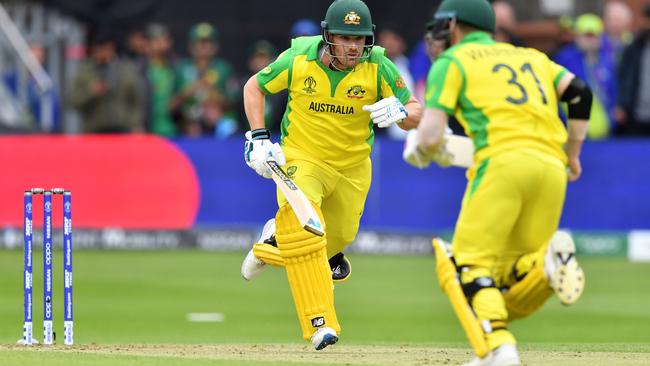
But it is their work in tandem that is the vital component, having posted the fourth best opening partnership average in World Cup history so far in the competition.
If they stay together and accumulate for 10-15 overs then a platform is set that is hard to break.
Likewise, England have Jason Roy and Jonny Bairstow doing the same thing to devastating effect, especially since the former returned from an enforced break from the side with a hamstring complaint.
If Finch and Warner can stick together and Australia find a way of separating the English pair, the game will tilt in Australia’s favour.
BANK ON STARC TO WEAVE CUP MAGIC
The 2015 World Cup final was as good as over after just five deliveries.
When a trademark Mitchell Starc yorker crashed into the off-stump of inspirational opener Brendon McCullum, New Zealand never looked like recovering.
It capped an extraordinary tournament for Starc, who took a tournament-high 22 wickets at the staggering average of 10.18 — and a strike rate of a wicket every 17.4 balls.
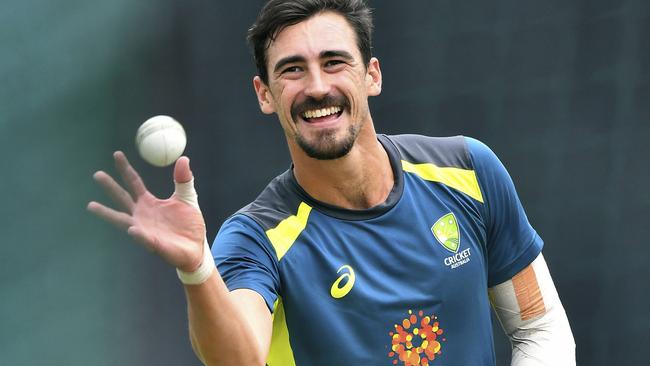
Four years on, and after some ups and downs between the World Cups, Starc is well and truly back to his fearsome best.
His taken a record-equalling 26 scalps already and looks certain to go past countryman Glenn McGrath as having taken the most wickets in a single tournament.
Starc demolished England the last time these teams met, knocking over the experienced pair of Joe Root and Eoin Morgan to reduce the home side to 3-26, before roaring back with the ball of the tournament to york Ben Stokes.
At his best there’s no more dangerous bowler on the planet and there’s certainly no English equivalent for Morgan to throw the ball to — as good as Jofra Archer’s foray into international cricket has been.
The 29-year-old shapes as a big point of difference between the two sides on Thursday, so just give him the new rock and let him rip.
HOPE THE REAL STEVE SMITH STANDS UP
So much of Australia’s hopes in this World Cup rested on the how the suspended pairing of David Warner and Steve Smith performed upon their reintegration with the team.
Warner has been exceptional — leading Australia in runscoring — as part of the tournament’s most impressive opening pairing.
Smith, on the other hand, started well with a match-saving 73 against the West Indies which was followed by half centuries against India and Sri Lanka — but has dropped off drastically since then.
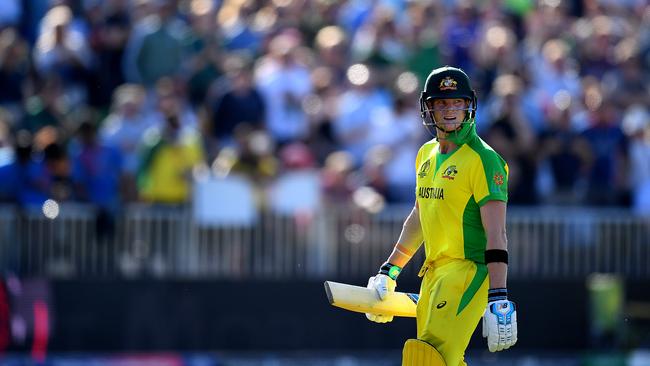
Three single figure scores in his past four games must have alarm bells ringing, and with the injury to Usman Khawaja Australia desperately needs their biggest batting star to regain his magic touch.
A move up the order, replacing Khawaja at No. 3, could be just the tonic.
Smith averages a mighty 52.06 at first drop — comfortably his best spot in ODI cricket, compared to his next best of 35.62 at No. 4 — and has scored seven of his eight centuries there.
It was the role in which he excelled at the 2015 World Cup, of course.
After two early failures batting at 4, Smith was promoted against Afghanistan and returned a near run-a-ball 95 to kickstart his campaign.
He wouldn’t relinquish he role — passing 50 in each innings, including a century against India in the semi-final and an unbeaten 56 to defeat New Zealand in the final.
Australia could use that sort of output from Smith starting on Thursday.
KEEP SCOREBOARD TICKING
There have been times in this campaign when Australia’s middle order has become becalmed after a strong opening from above. This does not necessarily need to be a cause for panic.
Even in the two defeats, to India and South Africa, Australia were behind the match for the duration but managed to post scores over 300. A 50-over match has ebbs and flows, periods of feast and famine.
England have bowlers in the likes of Liam Plunkett, Ben Stokes and (if he finds his pre-tournament form) Adil Rashid, who can clog up the middle overs. When that happens, the ability to rotate the strike, pick up the ones and twos on offer and preserve wickets for the late assault will be vital.
The Australian coaching brains trust undoubtedly recognises this, and that’s why Glenn Maxwell’s place in the side is in doubt.
THINK ABOUT MOVING CAREY UP
Australia’s progress to this stage of the competition has not come about thanks to many complete team performances; rather it has been built on the reliable big game quality of some of their usual suspects.
David Warner’s runs and Mitchell Starc’s wickets have been, on occasion, almost enough on their own to demoralise and decimate opponents.
The one real break out star has been Alex Carey, whose calmness at the crease is at odds with the furiously spinning wheel that is the scoreboard when he comes out to bat.
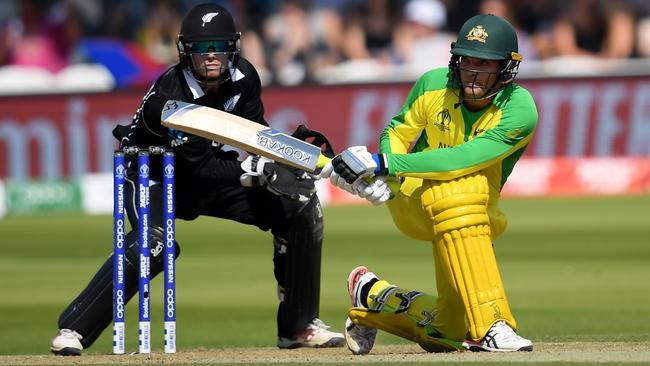
Carey’s contribution from No. 7 is already the greatest from a batsman that low down the order. Still callow in international terms, the decision to hand him a leadership role has been vindicated by his ability to steady innings following collapses. His knack of accelerating smoothly speaks of the raw talent that complements that.
There is value in moving him up the order for the clash with England, or being prepared to promote him if the match situation dictates.
He has failed to go past 20 just twice and gave hope where there was none in tandem with Warner against South Africa, an encouraging sign should Australia be forced to chase under pressure in either the semi-final or final.
A ‘hybrid of Michael Hussey and Michael Bevan’ sounds a big shout. But when it’s Steve Waugh saying it you have to take notice.
TRY AND MAKE IT A LOW SCORING GAME
There have been 27 scores of 300 or more in this World Cup — but only one successful chase of a target in excess of 300.
That came from one of the great World Cup chases when Bangladesh ran down the West Indies’ target of 322 — and did it was extraordinary ease, with 51 balls remaining, thanks to a blazing century to Shakib Al Hasan (124 from 99 balls) and a stunning knock by Liton Das (94 from 69 balls).
Put simply, despite being teased with the potential for scores reaching the magical 500-run mark, this has been a World Cup where targets of 300 have proven nigh on impossible to chase down.
The general rule of thumb — certainly from the mid-point of the tournament — has been to win the toss and bat if you want to give yourself the best chance of winning a game.
If Australia do find themselves bowling first, it is not a death knell on their hopes.
In addition to restricting the runscoring and trying to keep a manageable target in the 260-280 range, Australia will be encouraged by their efforts in the two 300+ chases they’ve been presented with so far.
Against South Africa (target: 326) and India (target: 353) they put in valiant chases which would give hope should they face a similar scenario against England.
Inspired by a Warner century, Australia fell a mere 10 runs short against the Proteas — and in both instances they piled on 300+ scores themselves.
Australia will enter this match with a revamped batting line-up, but the cornerstones of these chases — Warner, Finch, Smith, Carey — will all remain.
MANAGE THE BEHRENDORFF-CUMMINS CONUNDRUM
When Australia crushed England by 64 runs a fortnight ago, Jason Behrendorff was the star of the show — getting his name up on the Lord’s honour board for a stunning five-wicket haul.
The big left-arm quick was given the first over and asked to unleash.
And that he did — blasting through the defences of James Vince to send the openers’ stumps flying with just the second ball of England’s innings.
He would also dislodge Vince’s opening partner, Bairstow, before running through the lower order.
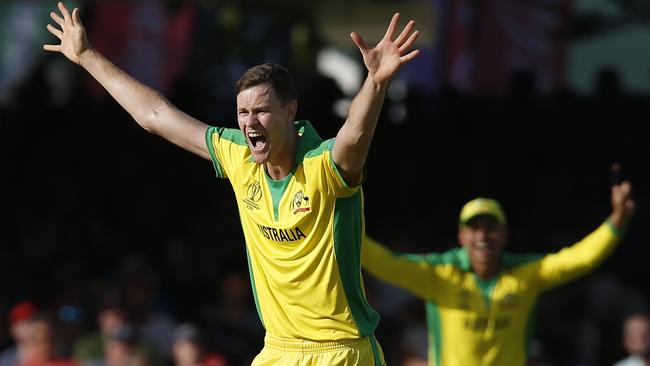
It seemed as though Australia had found its third-seamer solution: Behrendorff was the man to make the most of the new ball with Mitchell Starc, while Pat Cummins’ fire and brimstone approach would give Aaron Finch a fantastic first-change bowler.
However, in the final group game against South Africa — when Australia’s quicks were tamed by an out-of-form Proteas batting line-up — Behrendorff came crashing back down to earth, with 1-55 from eight overs.
Worryingly for Australia, taking the new ball away from Cummins has also blunted his hot start to the tournament.
Cummins had the new ball when he ripped through Afghanistan (3-40), Pakistan (3-33) and Sri Lanka (2-38) — but since dropping back to first change he’s returned figures of 0-41 (England), 1-14 (New Zealand) and 1-66 (South Africa).
Behrendorff is a noted new ball bowler, but he needs to justify that role — because if it costing Australia a shot at seeing the best of Pat Cummins, then it’s a big price to pay.
FOLLOW THE LEADER
One of the major success stories of Australia’s campaign has been the emergence of Aaron Finch as a tactically sound skipper.
Finch has showcased an exceptionally adept reading of the game during the group stages, with a willingness to take risks with his bowling changes.
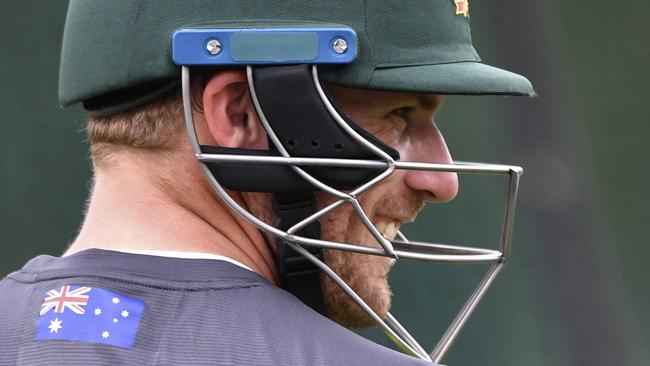
Former England captain Michael Vaughan says Finch has been the most tactically impressive skipper at this year’s World Cup, and it’s hard to argue with his verdict.
While throwing the ball to Mitchell Starc might seem like an easy ‘get out of jail’ card to play, Finch should be commended for the times in which he has deployed his strike weapon — often bringing him back ahead of what convention would dictate with your death bowler.
LISTEN UP: Ben Horne and Steve Wilson join podcast host Andrew Menczel to preview the World Cup semi-finals.
Stream above now or search ‘Cricket Unfiltered’ on iTunes, Spotify or wherever you get your podcasts from, and subscribe today to never miss an episode.
And the results have been there for all to see, with Starc picking up key wickets throughout the tournament during his second and third spells, including that of Ben Stokes with an unplayable yorker during the last clash with England.
Playing against the pre-tournament favourites — and world No. 1 — in their own backyard, Australia will need to make the most of every advantage they have.
Finch’s captaincy could prove to be a huge boon for Australia in what will hopefully be the two remaining matches to come.
*Disclaimer: following this plan does not guarantee success, World Cup scores can go up as well as down, never invest more emotional capital in a team than you can afford to lose.


